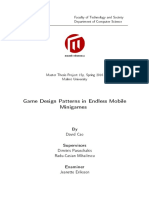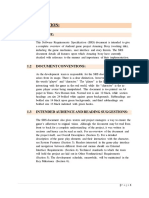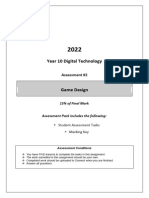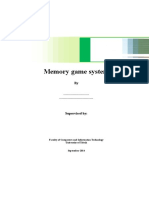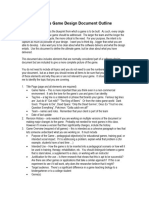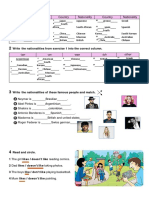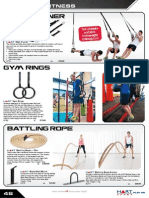Name: Muhammad Abdulsalam
Roll no: 231762
FM(s) Name: - Mr. Altaf Hussain
Subject: - GDP
Class: - BSCGD Semester: - III- A
Assignment 02
Task 1:
Understanding Prototyping
1. Prototyping:
Prototyping in game design involves building a basic version of a game to test out its key
features and mechanics. It’s an early step where designers can try out ideas, see how different
parts of the game work together, and figure out if the concept is actually doable. By keeping the
focus on how the game plays rather than how it looks, prototypng helps spot problem, tweak
gameplay, and improve ideas. This process of trial and error is essential for ensuring the final
game is fun, balanced, and engagng without wasting resources on unnecessary development.
2. Prototype Development:
Pattern Recall Mobile Game Prototype:
Core Mechanic: Memory-Based Pattern Matching
Type: Interactive Mobile Game
Game Interface:
1. A simple 4x4 grid on the screen where players tap squares.
2. Each square is filled with different colors or symbols like stars, circles, or triangles.
Pattern Display:
1. The game shows a sequence of squares lighting up. Players have a few seconds to memorize
it.
2. As the game progreses, patterns get longer and harder.
� Player Interaction:
1. Players tap the squares in the same order as the pattern. Feedback like sounds or effects
helps guide them.
2. Correct taps advance them to harder rounds; mistakes reset the round.
How to Play:
1. A pattern lights up on the grid, and players must memorize it.
2. They recreate the pattern by tapping the squares in the same sequence.
3. Points are earned for correct sequences, and rounds get tougher with more complex
patterns.
4. Reflection:
Building the mobile version made the game more dynamic and fun. Players loved tapping
through the patterns and felt accomplished when they got it right. The touch interaction and
added feedback like sound made it more engaging, especially as the patterns got more
challenging. This simple game turned into a great memory challenge, easy to play but hard to
master!
�Task 2:
Playtesting Process:
1. Playtesting:
Playtesting is an essential step in game development where real players try out
the game to see how well it works. During this process, designers observe how players interact
with the game, note any issues, and gather feedback on what’s fun and what’s frustrating. It
�helps catch problems that might have been overlooked, such as confusing rules or unbalanced
difficulty. Through playtesting, designer can tweak and adjust gameplay to make it smoother
and more enjoyable. It’s a key part of ensuring the game is both fun and functional before its
final release, aligning the design with player expectations.
2. Playtesting Session:
Name: Muhammad Raza
1. Found the complex patterns tricky at first.
2. Enjoyed the challenge as the sequences got longer.
3. Suggested giving players a bit more time to view harder pattern.
4. Liked how the difficulty increased gradually after she got used to the game.
5. Thought a reward system for consecutive correct answers would be motivating.
Name: Abdul Sami
1. Enjoyed the game but felt the patterns became hard too quickly.
2. Focused a lot on remembering small details in the patterns.
3. Suggested adding a "hint" feature to help when stuck.
4. Liked the simplicity but asked for more variety in patterns.
5. Enjoyed improving his score as he practiced.
3. Playtest Session Summary:
Key Feedback Received:
Pattern Difficulty:
1. The difficulty increase too quickly.
2. Players could use more time to study the pattern at higher levels.
3. A "hint" option would make it easier to recover when stuck.
Game Variety & Rewards:
1. Players wanted some kind of reward system for getting consecutive patterns right.
2. Adding more variety to the patterns would keep things fresh.
4. Planned Improvements:
Slowing down the difficulty ramp to give players more time to adjust.
Introducing a "hint" feature to help players struggling with tougher patterns.
Giving players a bit more time to view patterns at harder levels.
Adding a reward system for streaks of correct answers to keep players motivated.
� Introducing new patterns and shapes to keep the game interesting as it progresses.

